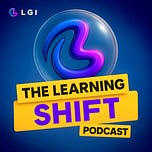Every company wants creativity and agility—but most are skipping the one ingredient that unlocks both: inclusion. If people don’t feel safe to be themselves, they’ll never take the kind of risks innovation demands.
Featured Book:
The 4 Stages of Psychological Safety by Timothy R. Clark
Big Idea:
Psychological safety isn’t one thing—it’s four stages. If you want a high-performing team, you have to earn each one in order.
Discussion Beats:
What the “4 stages” really are—and how to know which one your team is stuck in
Why inclusion isn’t a nice-to-have—it’s the foundation of performance
How to move a team from compliance to contribution (and then to real challenge)
Practical ways to help someone feel safe to disagree with you
Closing Takeaway:
You can’t have innovation without dissent. And you can’t have dissent without safety. Start by making space for every voice—not just the ones that sound like yours.
Summary:
Clark breaks down psychological safety into four progressive stages: Inclusion Safety, Learner Safety, Contributor Safety, and Challenger Safety. The model is clear, actionable, and meets leaders where they are—especially those working to build safety in environments that haven’t always had it. Each stage comes with real examples, leadership behaviors, and cultural signals that either move a team forward or keep them stuck. If The Fearless Organization makes the case for safety, this book gives you a step-by-step to build it.
Core message:
Psychological safety isn’t a binary. It’s built in layers—and each one must be earned through behavior, not policy.
This isn’t about making people comfortable. It’s about making it safe to be real.
If you want honesty, creativity, and high performance—you need psychological safety. And you can’t delegate that. You model it.
👉 Join the next LGI SuperSession: Psychological Safety — It Starts With Me.
Reserve your spot →













Share this post